Zinnias are colorful annual plants that are great to grow in the garden. These flowers also do well in containers, and will enhance any planting with their vibrant colors. Learn about zinnia care in pots, and get your sweet zinnia blooms off to a great start.
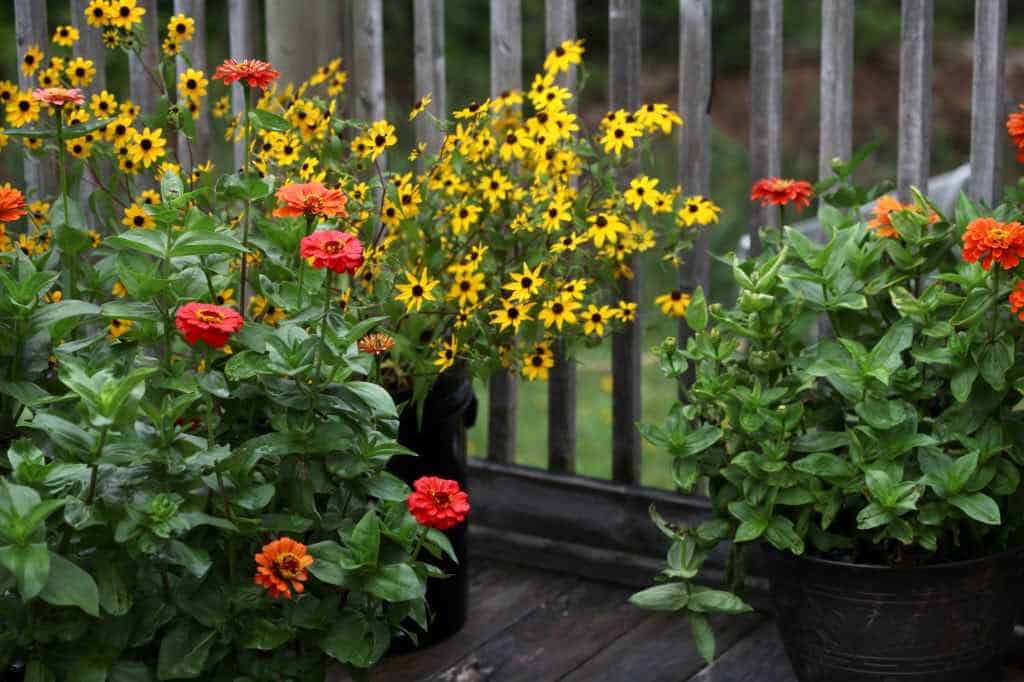
We grow a lot of zinnias at the farm, and they are some of my favorite bright blooms in the garden. Generally these annual plants are grown in rows, to harvest for bouquets.
This year I decided to plant some closer to home, and to grow them in containers so that I could enjoy them on a regular basis.
I am so glad that I did.
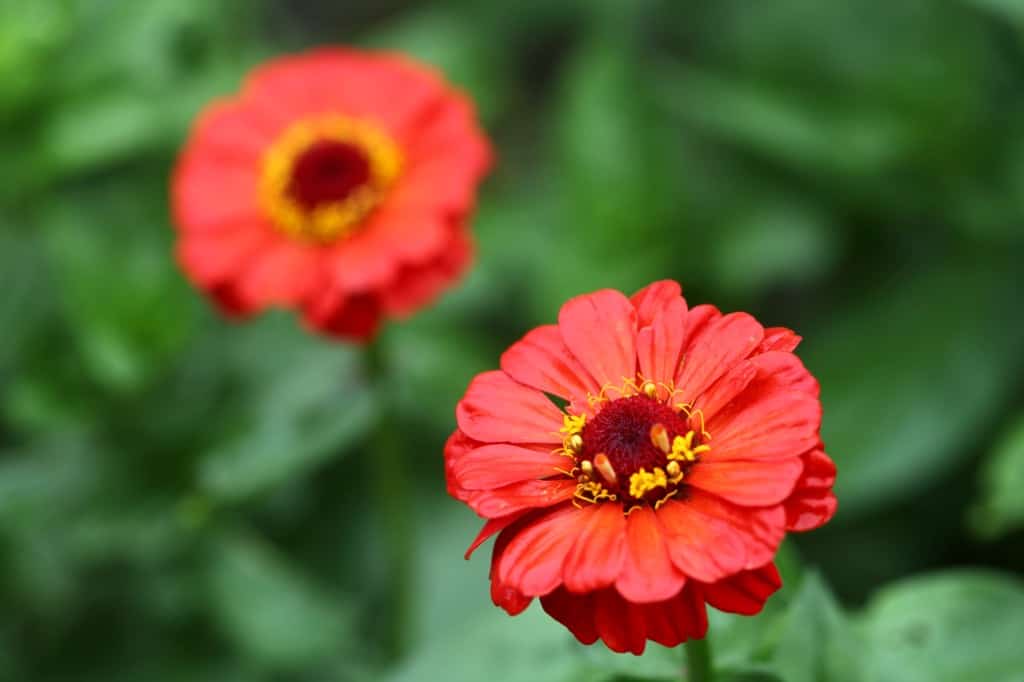
Can Zinnias Be Grown In Containers?
Zinnias grow well in containers, as long as you provide the right type of environment to meet their needs. Make sure that the containers have good drainage and fertile soil. Place them in a full sun location, water regularly, and the container grown zinnias will flourish.
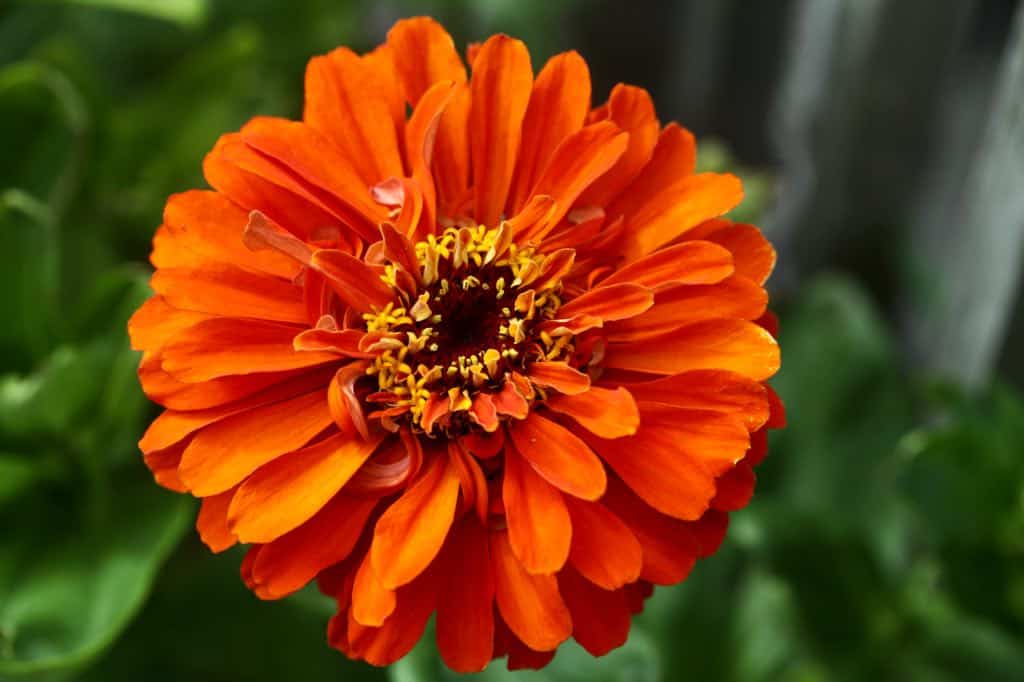
When you plant zinnia flowers in pots you can place the flowers anywhere, and as long as they are in a sunny location, they should thrive and grow.
I planted three pots full of bright pinks and oranges, and placed them on my deck to enjoy from the house. The hummingbirds are attracted to the bright colors and visit regularly, which is such a pleasant surprise.
The lovely combination of single flowers and double flowers in the potted arrangements made for a beautiful and interesting display.
Zinnias are warm weather plants, and love the heat of the sun, and the warm soil temperatures in the containers.
They tolerate the planting in containers very well, and thrive in this setting.
Zinnias will grow and bloom throughout the growing season, right up until the first frost in autumn.

Planting Zinnias In Pots
Zinnias are well adapted to grow in containers and pots, since these are heat loving annual flowers.
They do better in larger containers rather than window boxes, as the stems can grow quite long, depending on the variety. Dwarf varieties such as the Thumbelina mix, may be more suited to a window box planting.
There are several ways to start the flowers in pots, including direct sowing, as well as starting the seeds early indoors, and then transplanting the seedlings into the pot.
Choose a container to match the variety of zinnias that you will be planting. For example, taller varieties with large flowers, such as the Benary's Giant zinnias will do well with the extra support at the base of the plant.
The pot type does not make a difference, so choose any pot that you love, as long as it is big enough to accommodate your flowers, and also has good drainage.
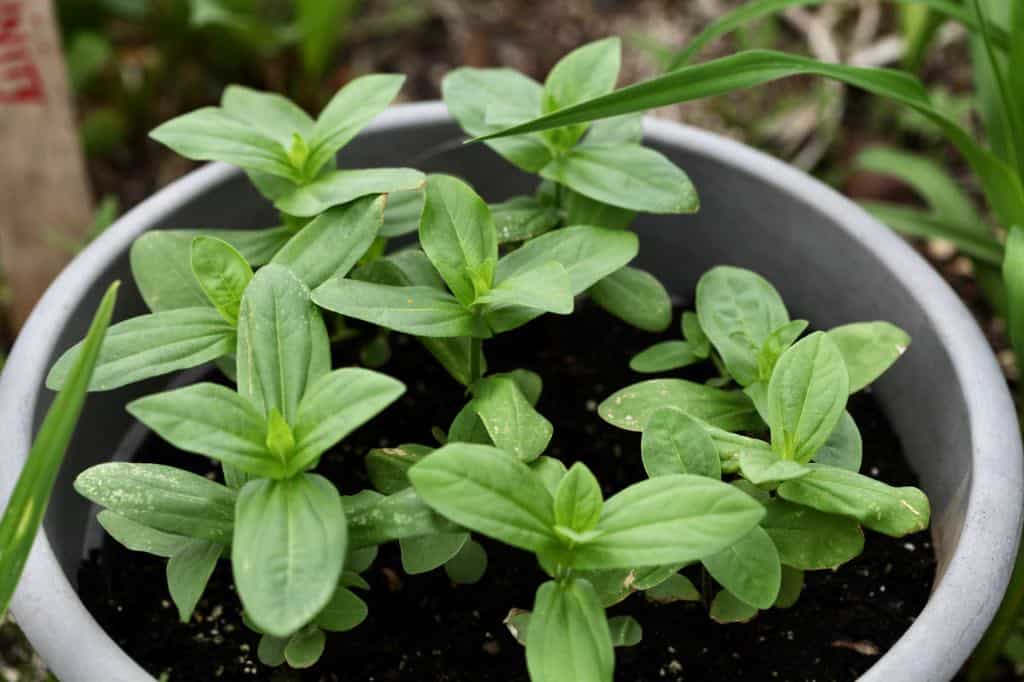
Let's review each method of planting.
Direct Sowing
- Zinnias are some of the easiest flowers to plant from seed. They are easily sown directly, either straight into the garden or into containers.
- These are tender annuals however, so it's important to wait until the danger of frost has passed if you are using this method.
- Know your frost dates, and plant after the last spring frost date for your usda plant hardiness zone.

- These heat loving annuals will respond better to warmer conditions and germinate more readily in the heat, so wait until the soil and air temperatures have warmed before planting.
- To direct sow into pots, first choose a medium to large sized pot, with good drainage holes.
- I was surprised with the exceptional growth of the plants in the pots, and was glad to have chosen pots of a fairly good size.
- Fill the pots with a good quality soilless mix. The mix will make a difference in plant health and growth.
- Plant the zinnia seeds approximately ¼ inch deep, spacing approximately 6 to 8 inches apart, and cover with the soilless mix.
- Water in well, and keep the soil moist while waiting for the seeds to sprout. Germination ususally occurs between one to three weeks.
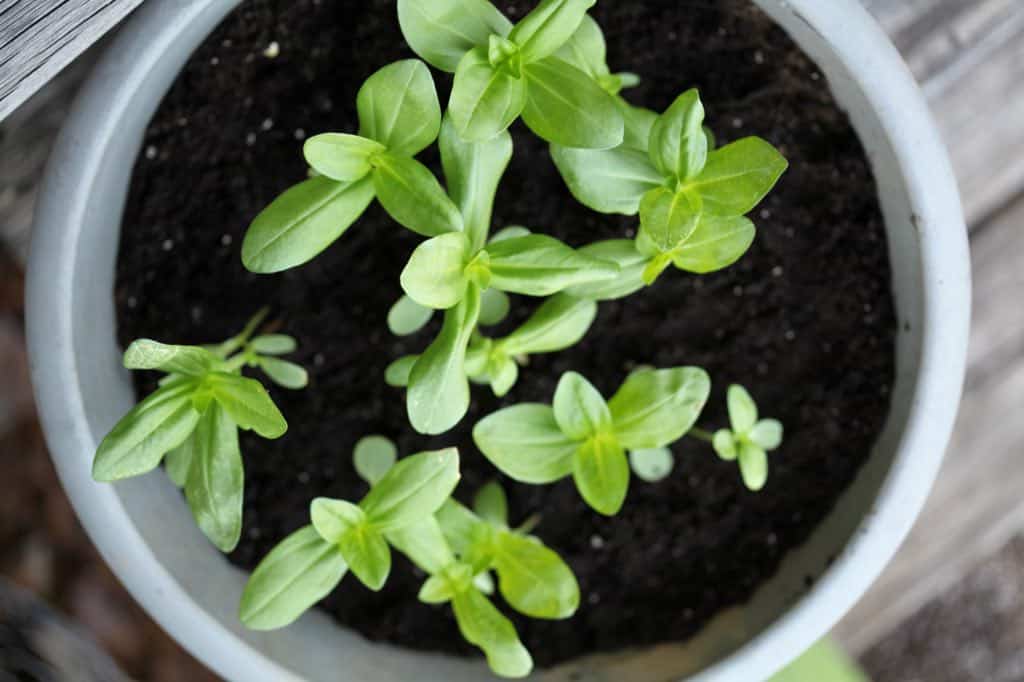
Starting Seeds Indoors
When you start zinnia seeds indoors early, you will be able to transplant larger seedlings out into your pot, instead of just planting seeds.
This means that you will be able to get blooms earlier in the season.
Sometimes you may even be able to find zinnia transplants at the garden center, which you can also plant into your pots.
In cooler growing zones, starting flower seeds indoors can help the gardener to get a head start on the growing season. This is especially important when last frost dates are later in the season.
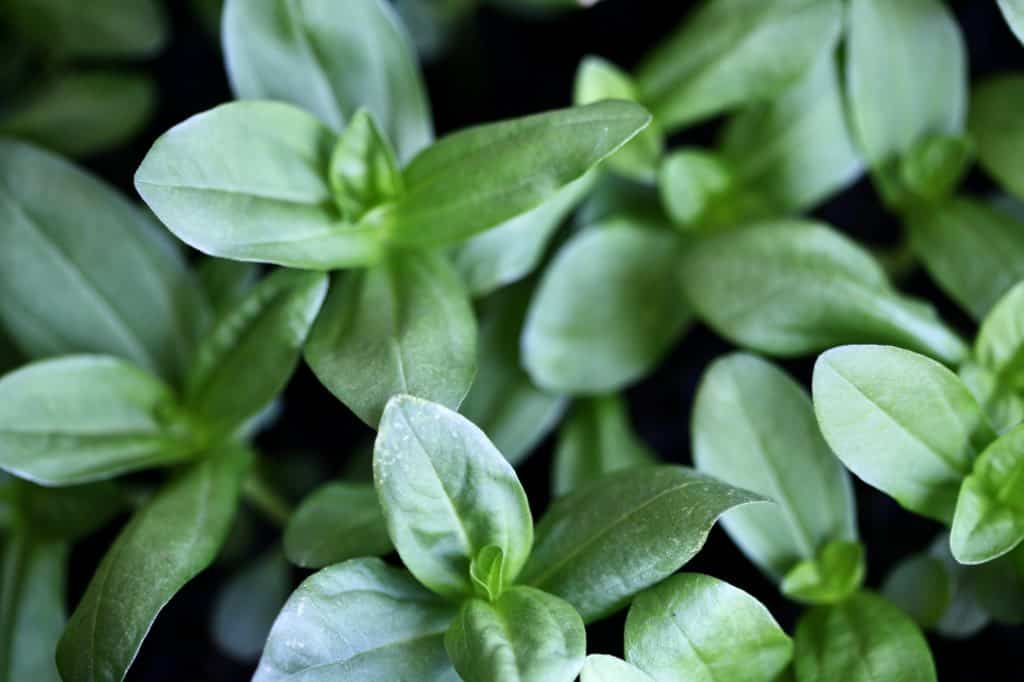
Starting zinnias indoors is easy:
- Start the seeds in late spring, approximately 4 to 6 weeks before your last frost date.
- It is best to plant the seeds in separate containers, such as cell trays or peat pots, to prevent root disruption during transplantation.
- Fill the cell trays with the soilless mix. Plant the zinnia seeds into the cells, and cover with the mix.
- Bottom water the tray. Remember to keep the soil moist during the germination process, for best results and viability of the seed.
- Provide bottom heat on a heat mat, which will help to warm the soil and aide in germination.
- When 60% of the seeds have germinated, remove the tray from the heat mat.
- Grow the zinnia seedlings under a grow light until ready to be planted out into the pots.
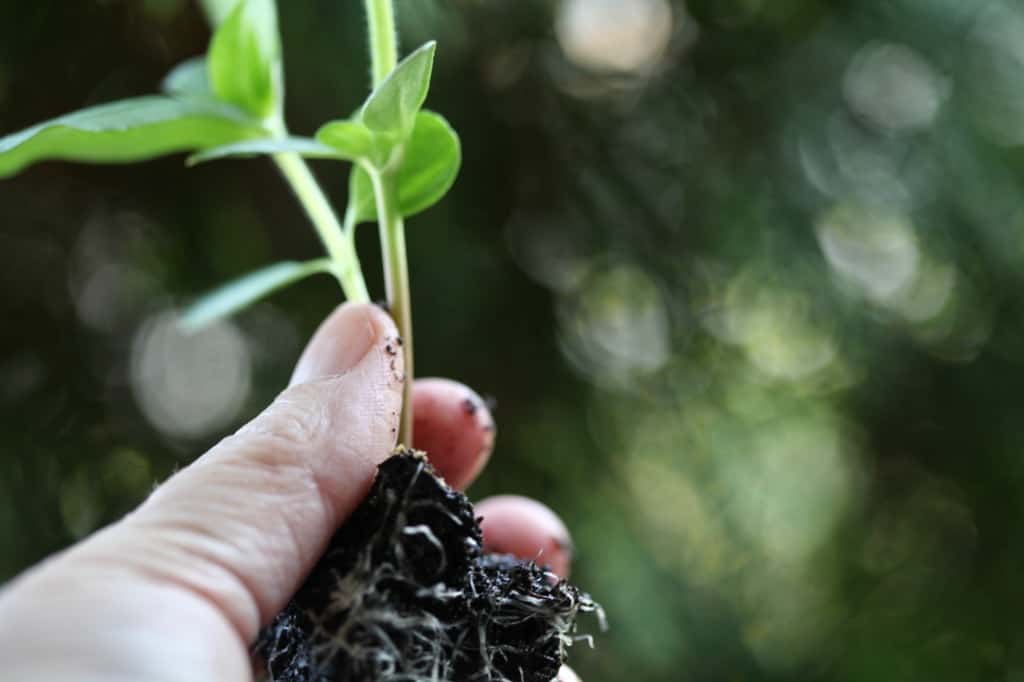

Transplanting Into The Pots
- Remember to harden off the young plants before transplanting out.
- As well, it is important to wait until the risk of all frost has passed, as these plants will perish in a late spring frost.
- Transplant the seedlings into the pots about 8 inches apart. Follow the guidelines for spacing on your zinnia seed package, as spacing is variety dependent.
- Water in well after planting.
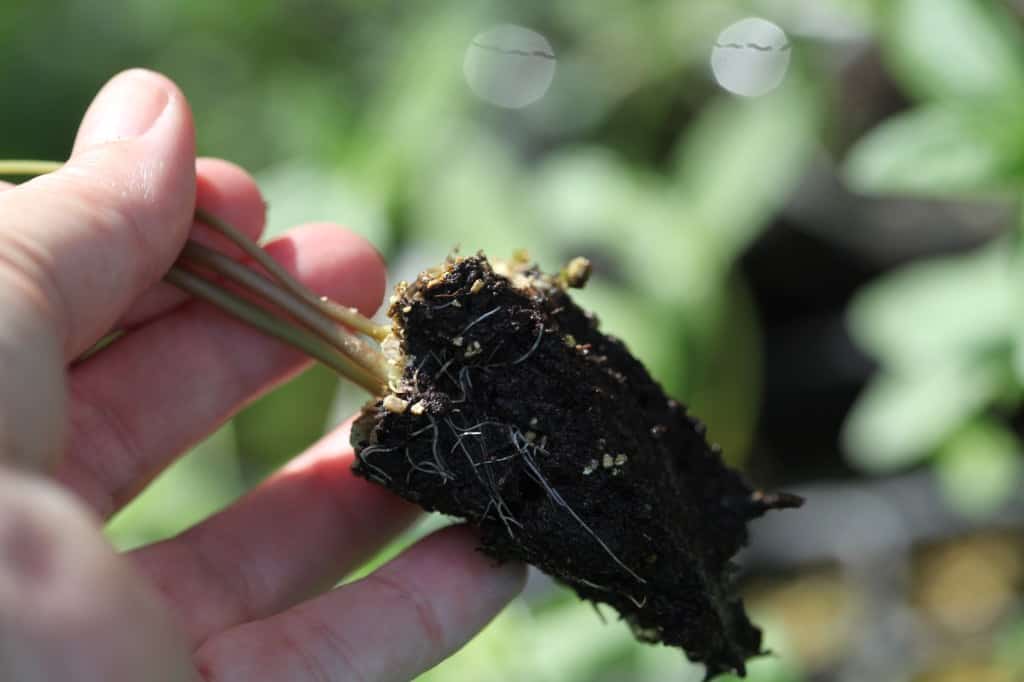
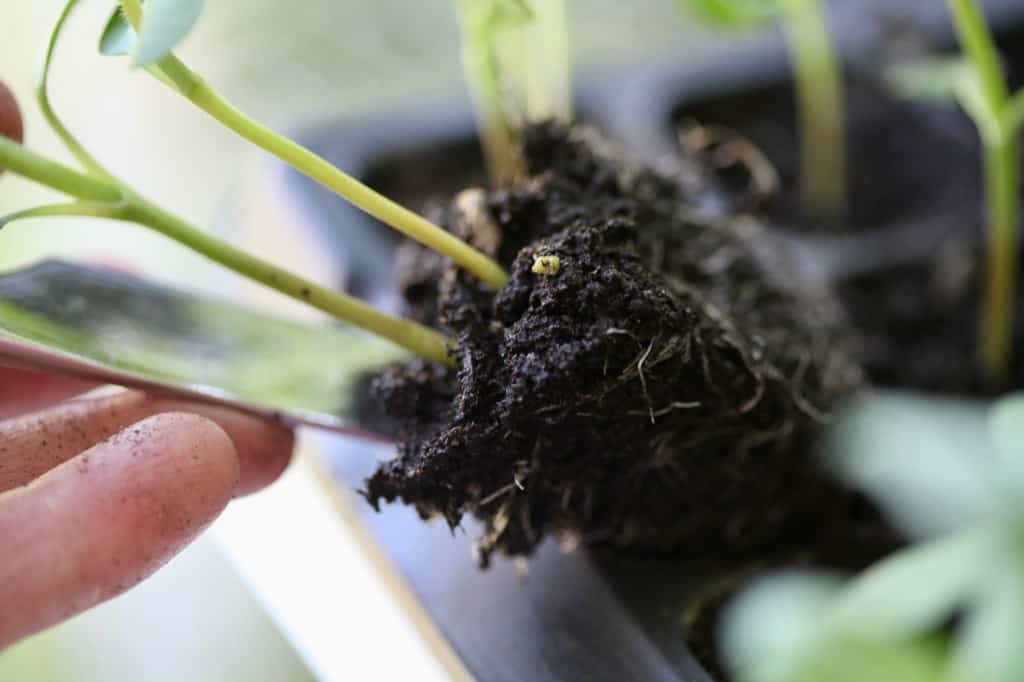
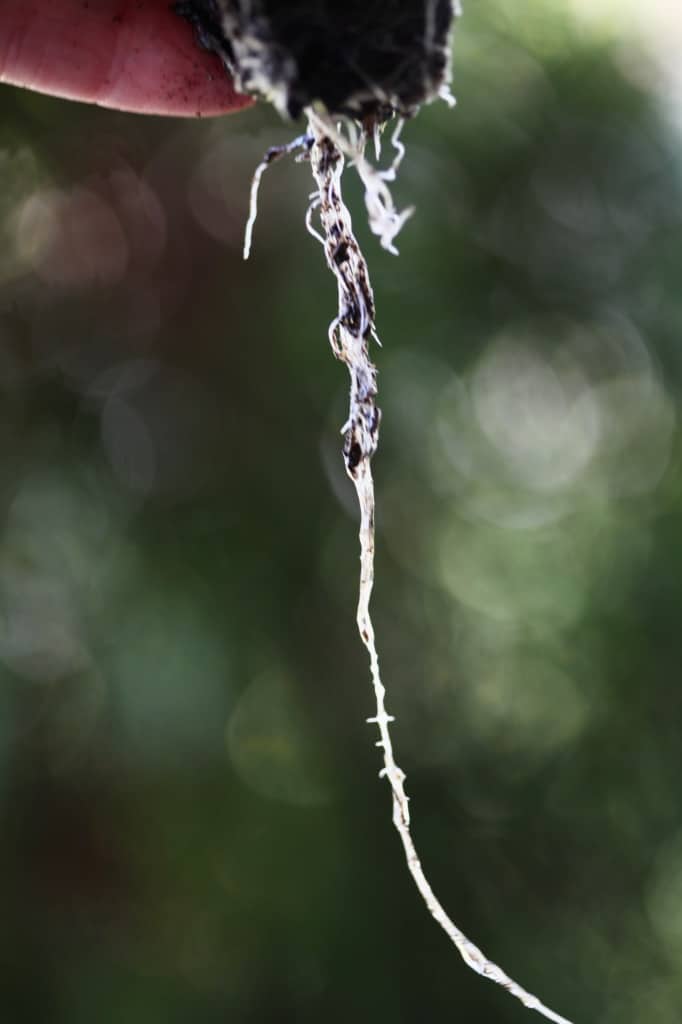
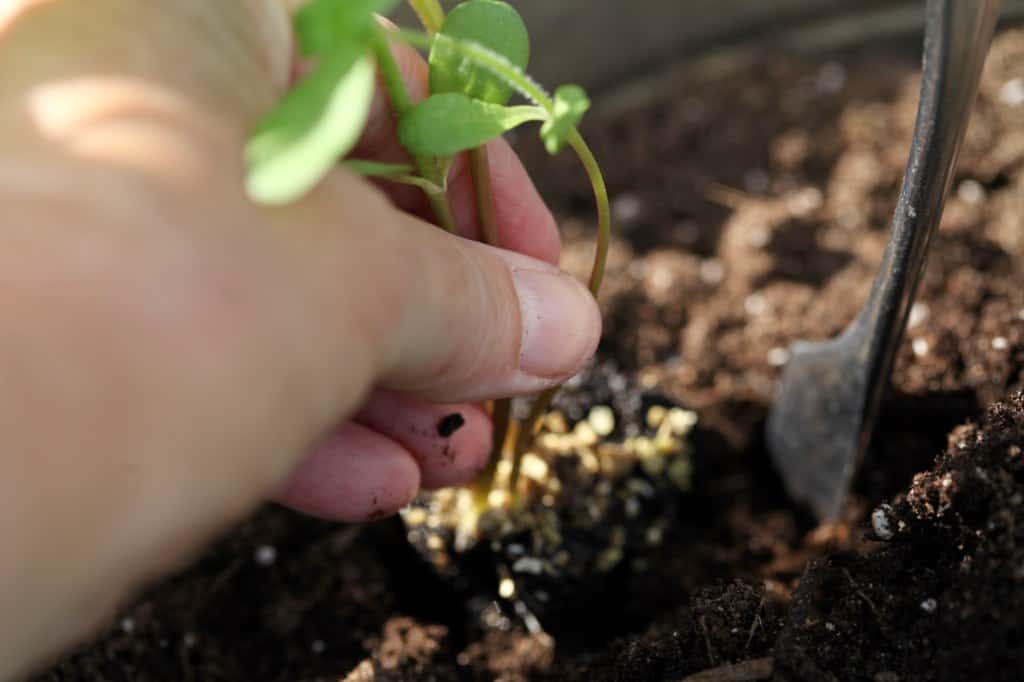
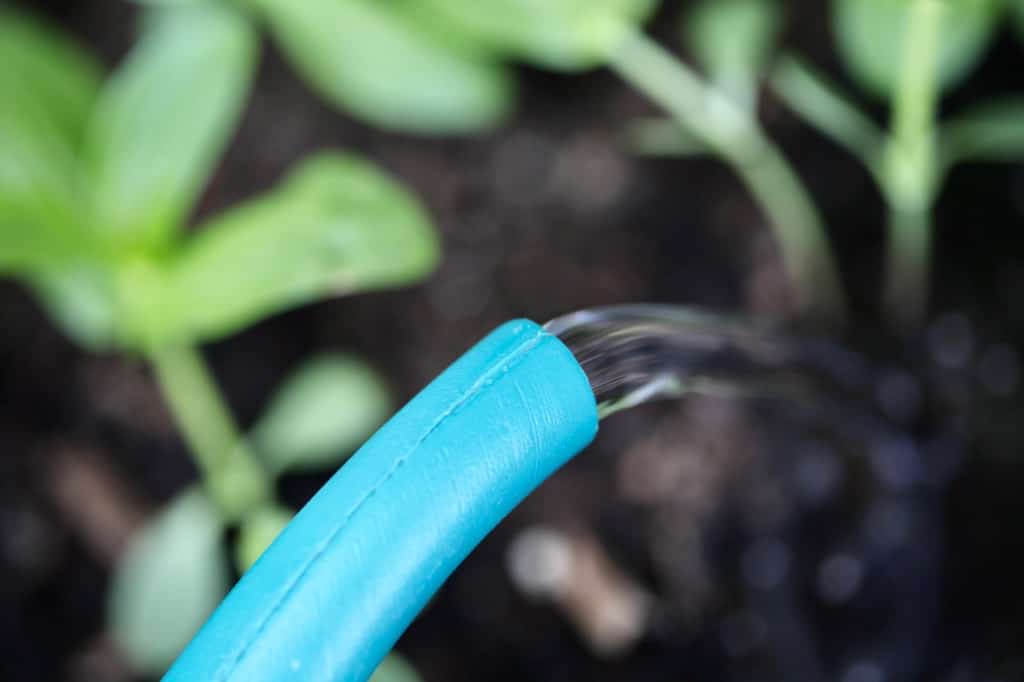
Zinnia Care In Pots
Zinnias are easy care plants for container gardening, and ideal container plants.
As long as the plants are given the right care to meet their needs, they will will reward you with beautiful blooms all summer long.
Zinnias are also considered to be cut and come again flowers and make great cut flowers, so you can cut a few from your container, and bring them inside. The more you cut, the more they will grow.
The important thing is not to take too many all at once (unless you want to), and to leave some in the container for the hummingbirds to enjoy as well.
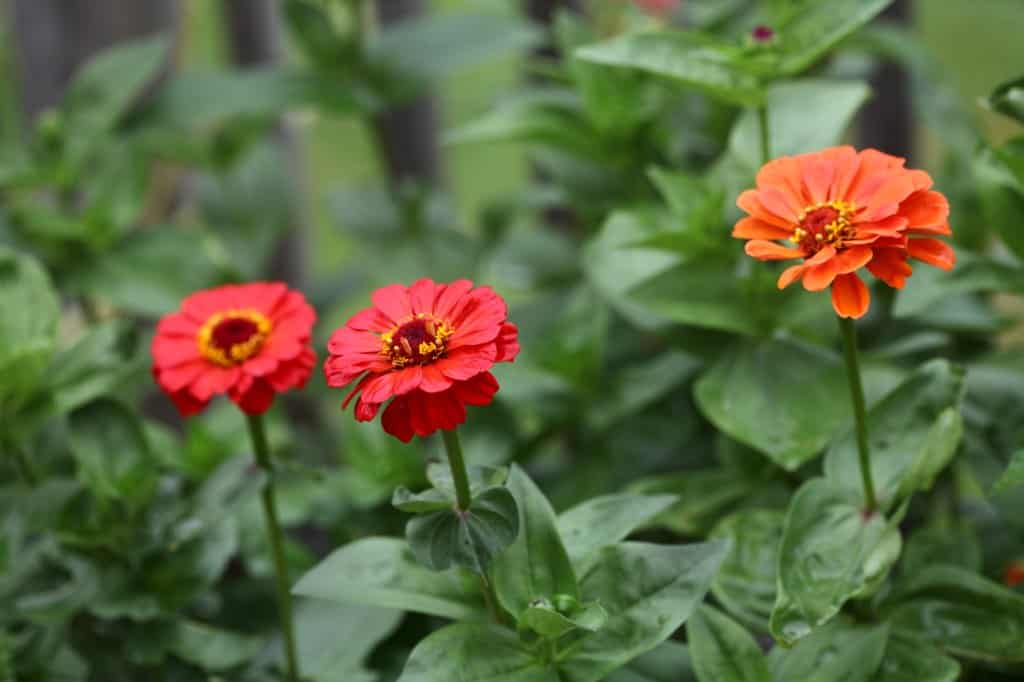
Now let's have a look at some considerations for zinnia care in pots.
Light Requirements
- Zinnias thrive in full sunlight, so place the pot filled with zinnias in a warm sunny spot.
- The zinnia stems can become long and leggy, especially when young seedlings, if there is not enough light for them to grow.
Do Zinnias Need Full Sun?
- At a minimum, the zinnias should receive at least six hours of direct sunlight per day, but try to aim for full sun if at all possible.
- Zinnias grown in full sun are also less at risk to developing diseases, such as powdery mildew, which can occur in moist and shady locations.
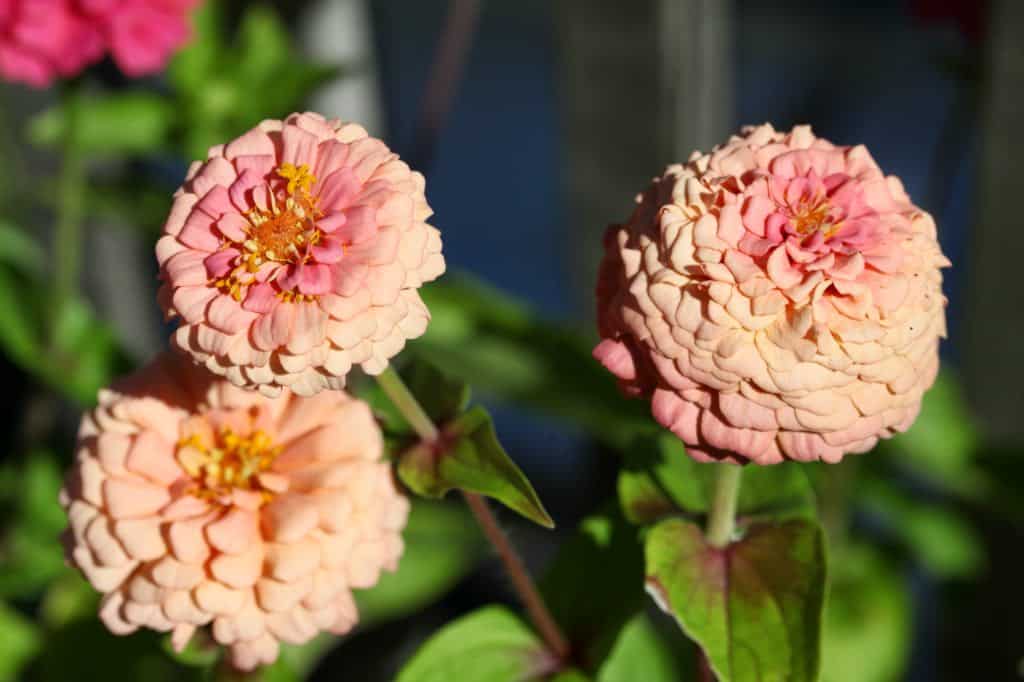
Soil Requirements
- A good soilless mix with lots of organic matter is ideal for growing zinnias in containers.
- The soil should be well drained, and allowed to dry slightly between waterings.
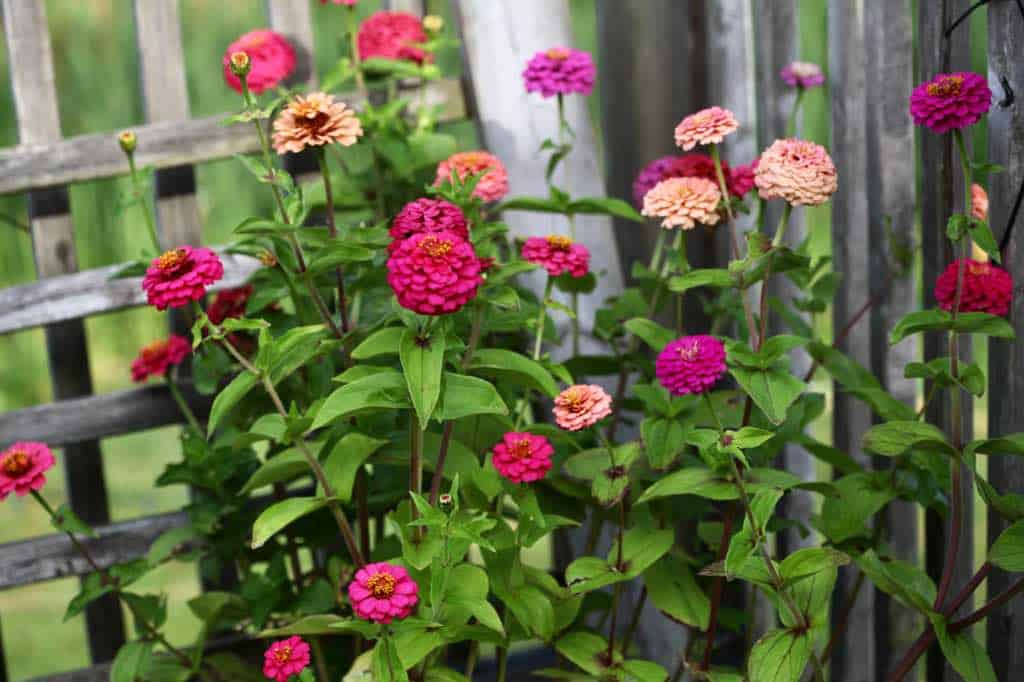
Water Requirements
- Zinnias are drought tolerant, however will quickly wilt when the soil becomes very dry.
- If you notice wilting from lack of water, water immediately and deeply, and the plants should bounce right back if you have caught them in time.
- Zinnia plants do not like excess water and wet feet, however they also do not like to be completely dry in their containers. The leaves will droop fairly quickly, although will also bounce back quickly if they are watered immediately.
- In general, water the zinnia pot when the soil surface has become slightly dry. Water deeply and fully, and allow the soil surface to dry slightly between waterings.
- Zinnia plants respond well to waterings, so try to water at least three times per week, or more if required. Let the soil surface be your indication of watering needs.
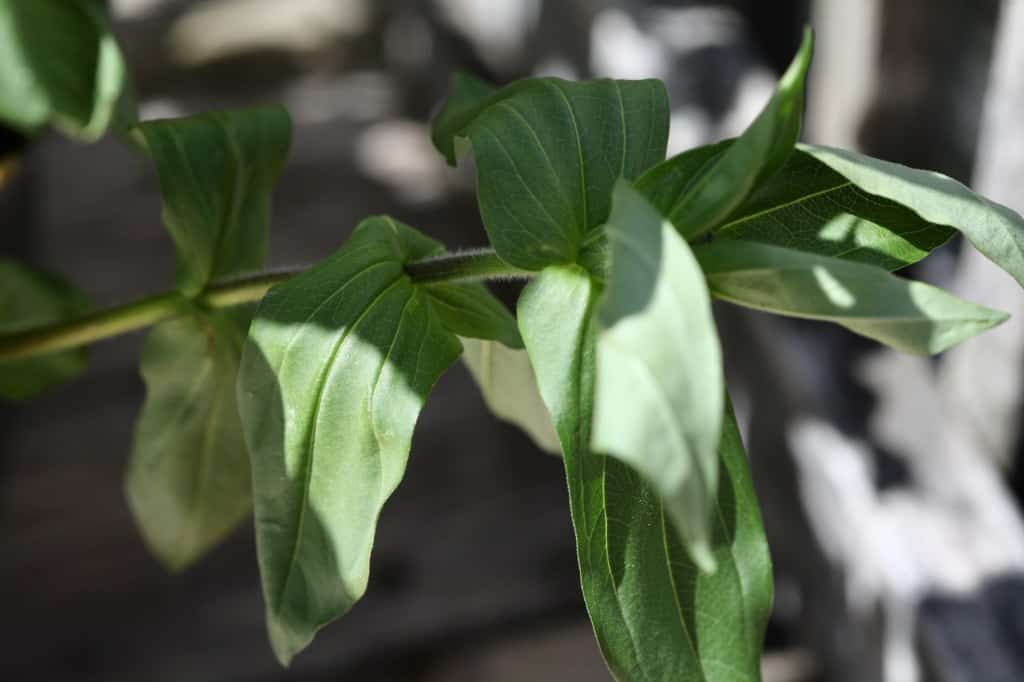
Pinching Zinnias
- This process is optional for container grown zinnias.
- Pinching is a process by which the first flower head on a young zinnia plant is pinched back to a set of leaves. This encourages branching and long stems on the zinnia.
- Pinching back the central stem when the zinnia plants are young, will cause branching to occur at the base of the plant. This will also make the zinnias more bushy, and cause the stems to lengthen.
- Pinching is often done to field grown zinnias, to get longer stems for flower arrangements.
- This process can certainly be done to container grown zinnias as well, although is not necessary.
- If you haven't pinched your zinnia plants, don't despair. The plants will still branch out in the pot, and become full and lovely, just as they are.
- If you decide to cut a few stems for arrangements, you are essentially pinching at the time you are cutting the stems. This will stimulate more stem growth.

Deadheading Zinnias
- The best way to keep your zinnias blooming is to deadhead the spent blooms.
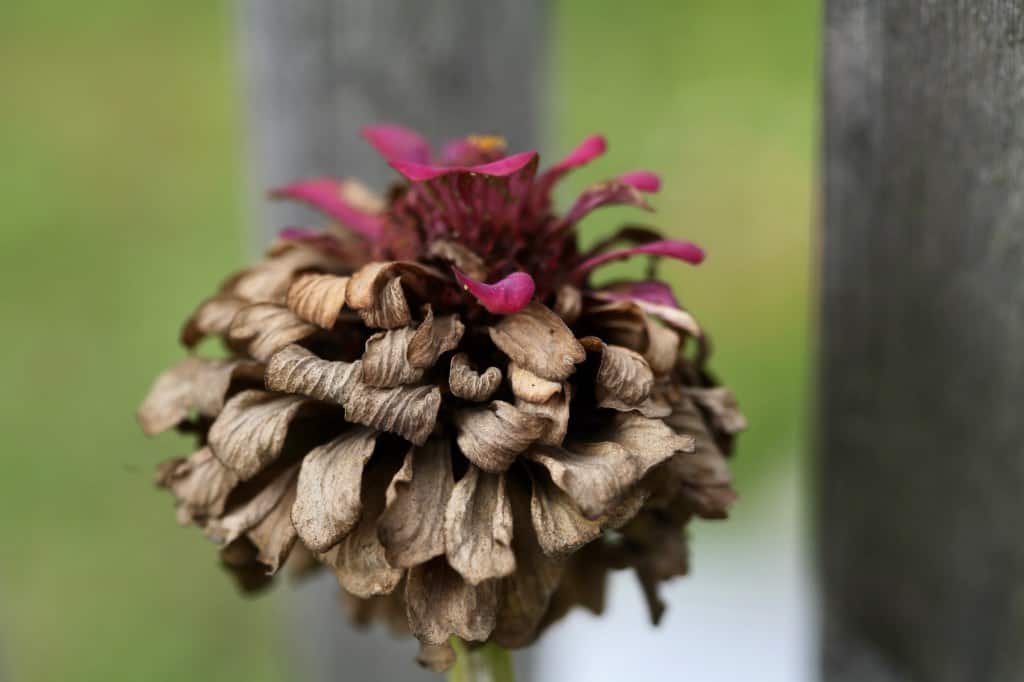
- Deadheading or pruning is important aspect of care for your zinnias growing in pots. It will help to keep your zinnias neat and tidy, as well as healthy and happy.
- Zinnias keep on blooming throughout the growing season. On each plant there will be blooms in various stages of maturity.
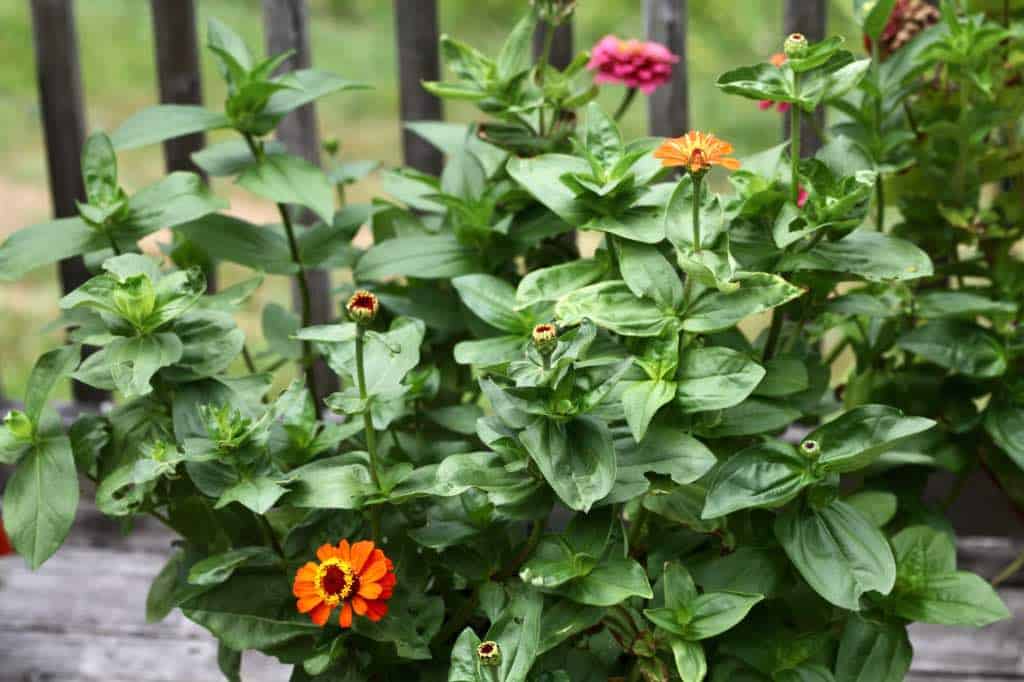
- As the most mature blooms become spent, they will turn brown and start to form seeds. At the same time, the plant continues to flower and produce more new blooms.
- Deadheading the spent blooms helps to divert the energy back into the plant for bloom formation, rather than using that energy for seed production.
- Deadheading also tidies the look of the plant, removing old flowers which are less vibrant and browning.
- If you plan on saving zinnia seeds at the end of the season, allow a few spent blooms to remain on the plant to mature, for seed collection.
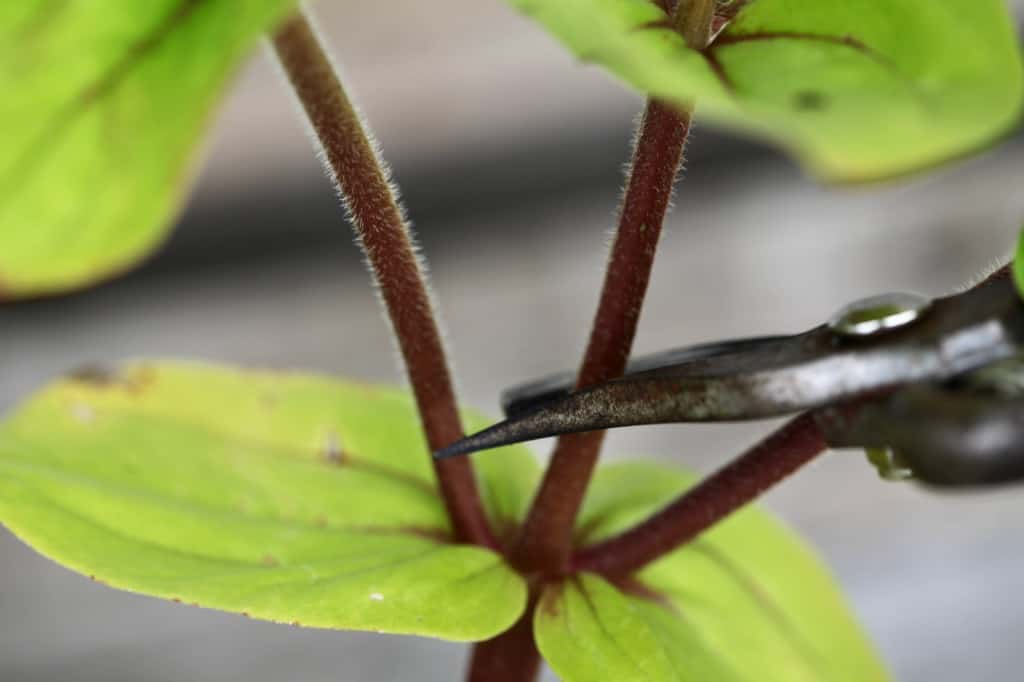
Pests And Diseases
- Watching out for pests and diseases is also a part of zinnia care in pots.
- Young and tender plant foliage may be vulnerable to snails and slugs. An early sign of these pests is leaf damage and loss.
- Just remove the pests from the plants.
- Powdery mildew, which is a fungal disease, can also be an issue in moist locations. Remove the affected foliage and treat if needed.
- Zinnia plants that are not overcrowded in the pot will have better air flow around the plants. Less crowding means good air circulation, and less risk for disease.

Conclusion
Zinnias are some of the easiest and most colorful flowers to propagate and grow. Plant some for your cutting garden, butterfly garden, and for your containers as well.
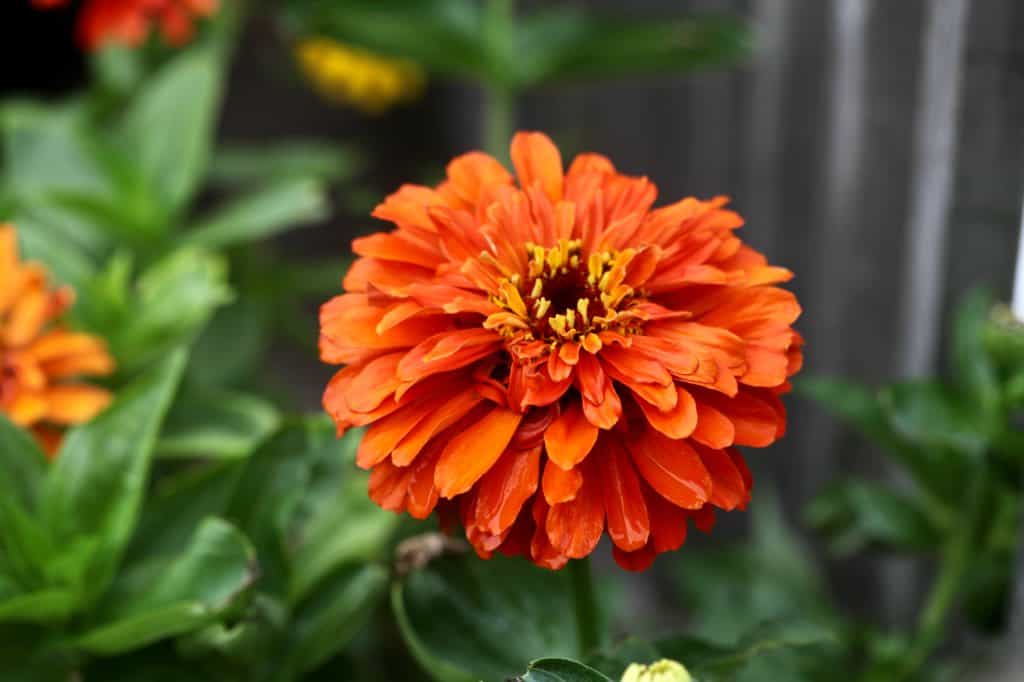
Zinnias are often grown in flower beds, and in the cutting garden, however they also do very well grown in containers.
Plant some for cutting, and save a few transplants or seeds for your containers as well.
Growing and caring for zinnias in pots was a pleasant surprise.
The plants thrived in the containers, and grew full and bloomed abundantly. The flowers drew hummingbirds to the deck, which were wonderful to see.
This growing season was the first of many for growing zinnias in containers.
I am already planning the colors that I want to see on the deck for new plantings next season, and very much looking forward to the process again.
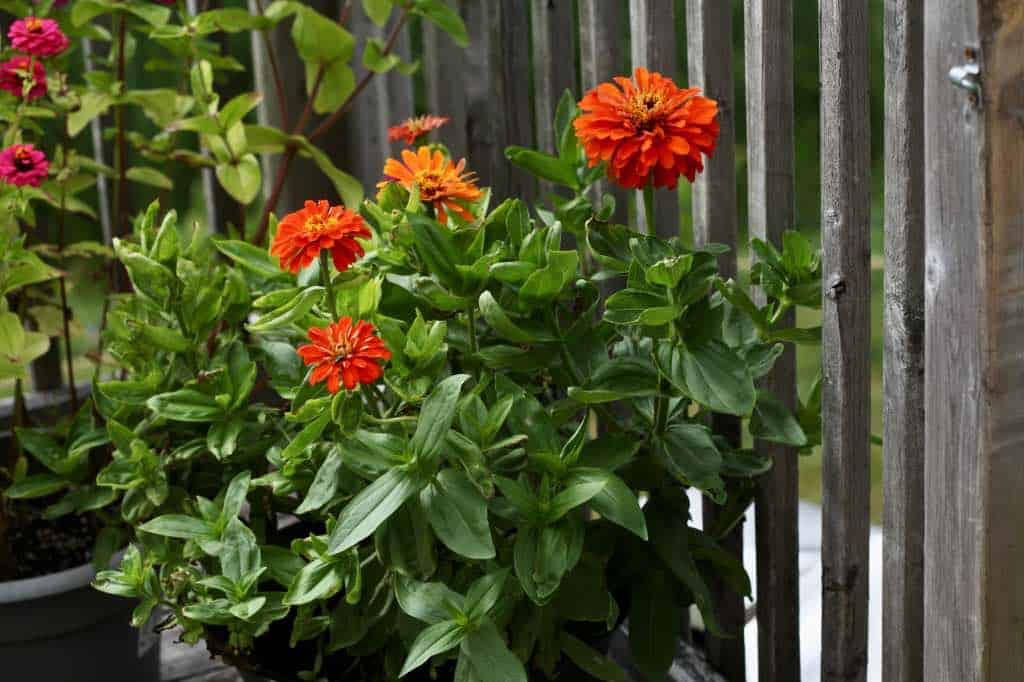
Have you ever grown zinnias in containers or pots? Be sure to leave a comment below to share your experience of providing zinnia care in pots!
Other Posts You May Like:
Also, see the Web Story on Growing Zinnias In Containers!
PIN IT FOR LATER!
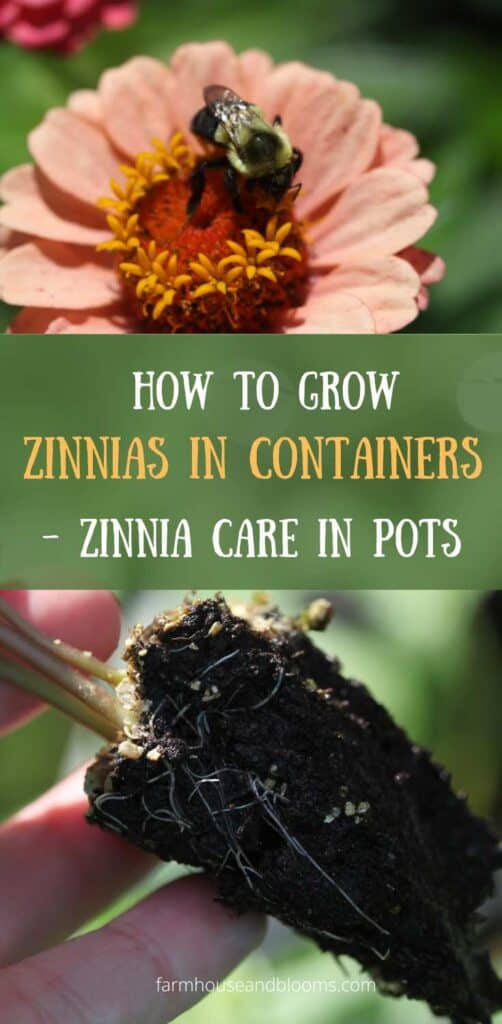
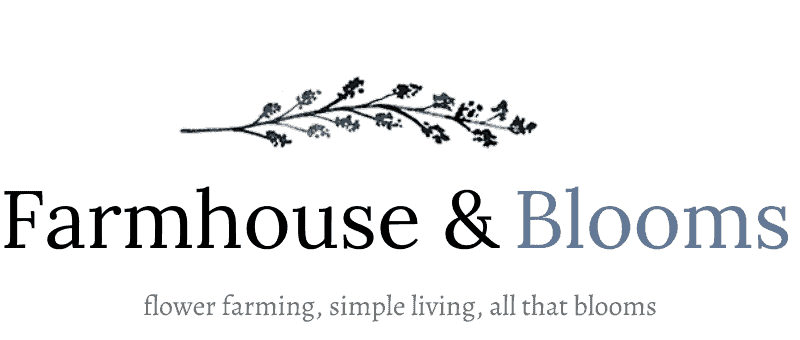


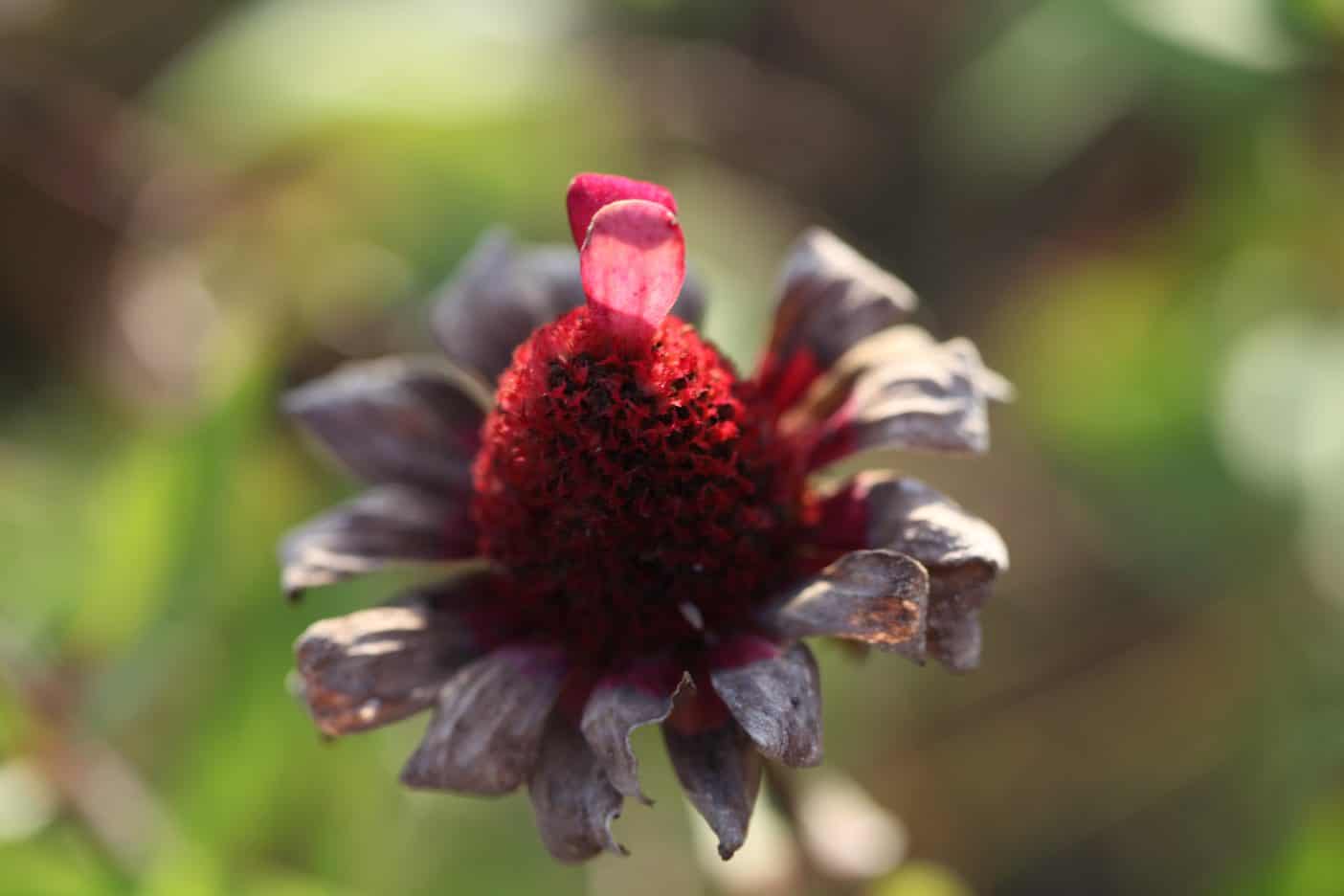

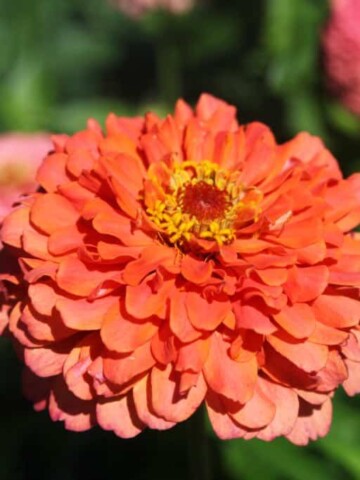

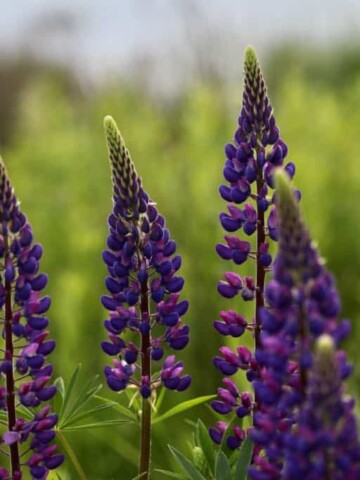
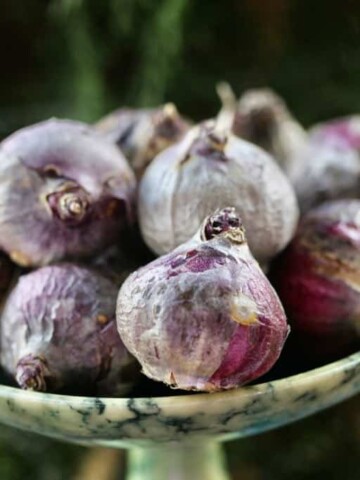
Leave a Reply